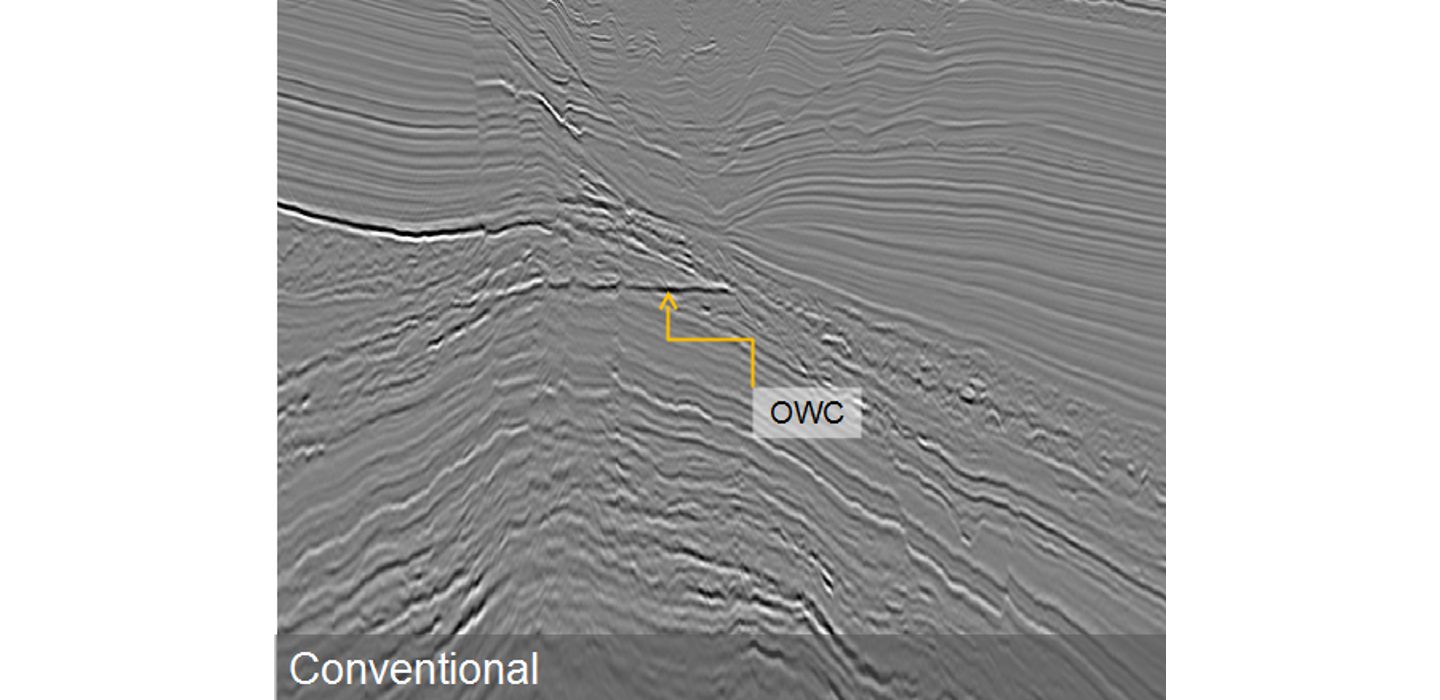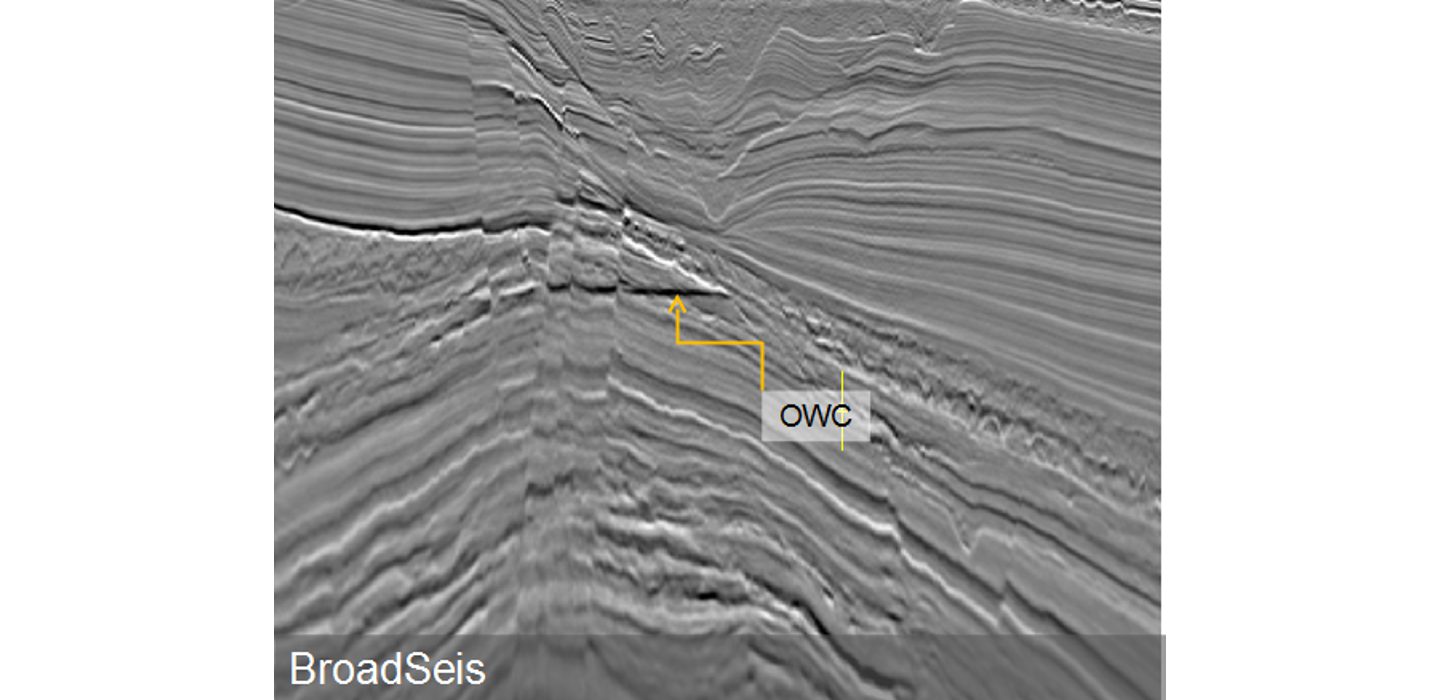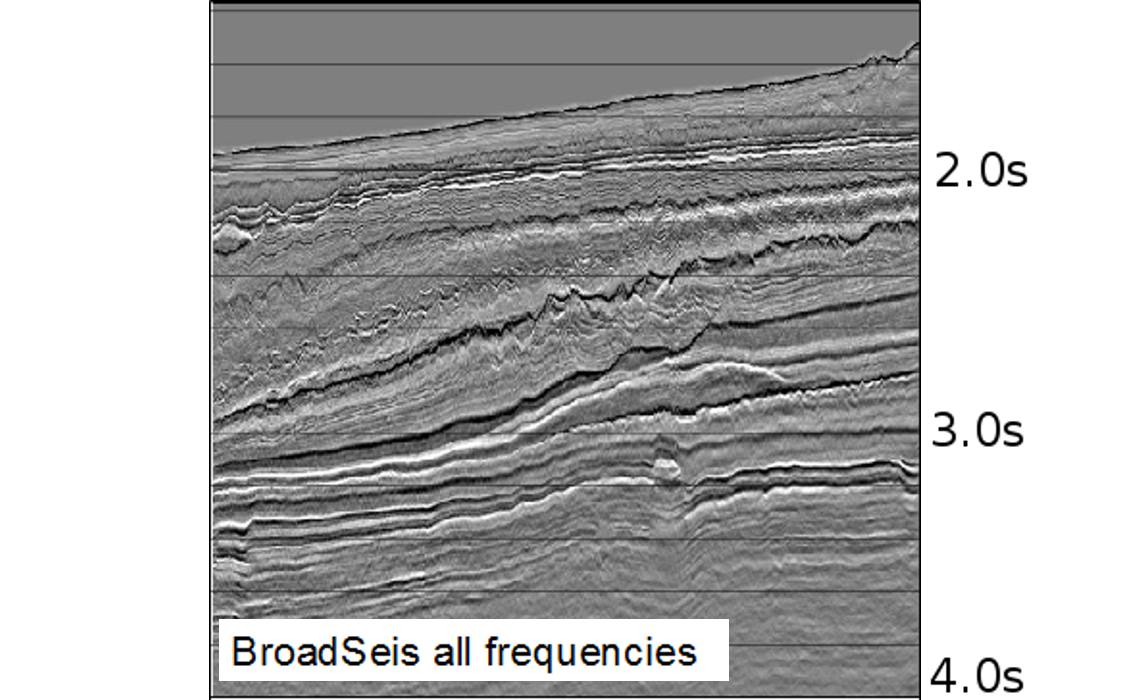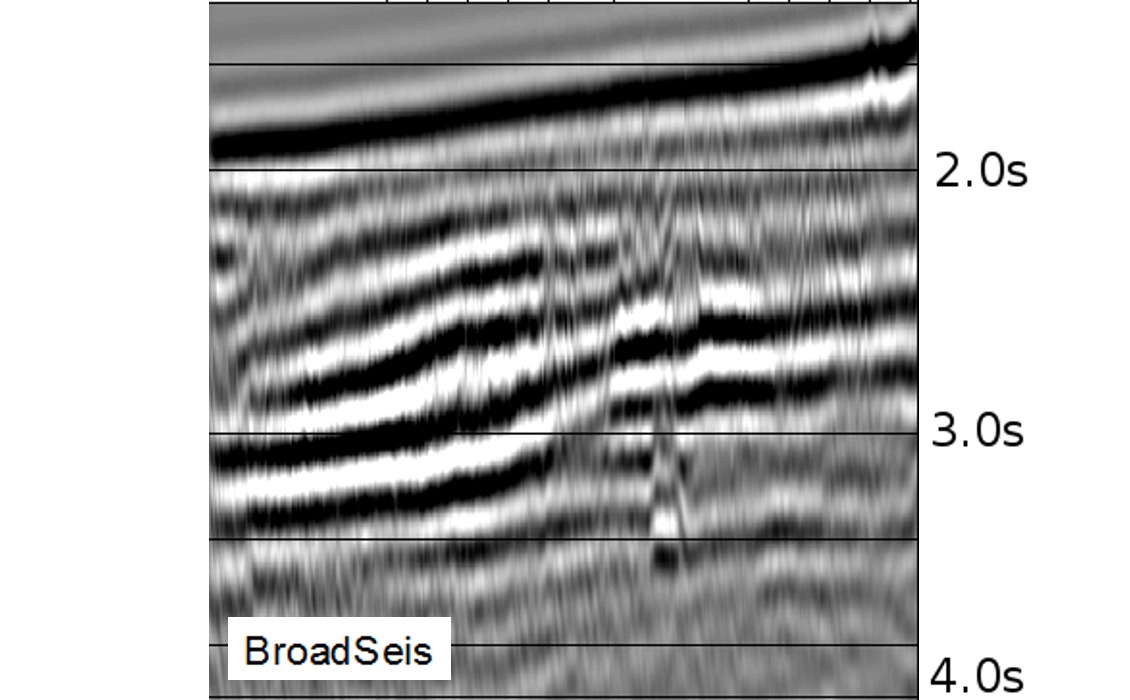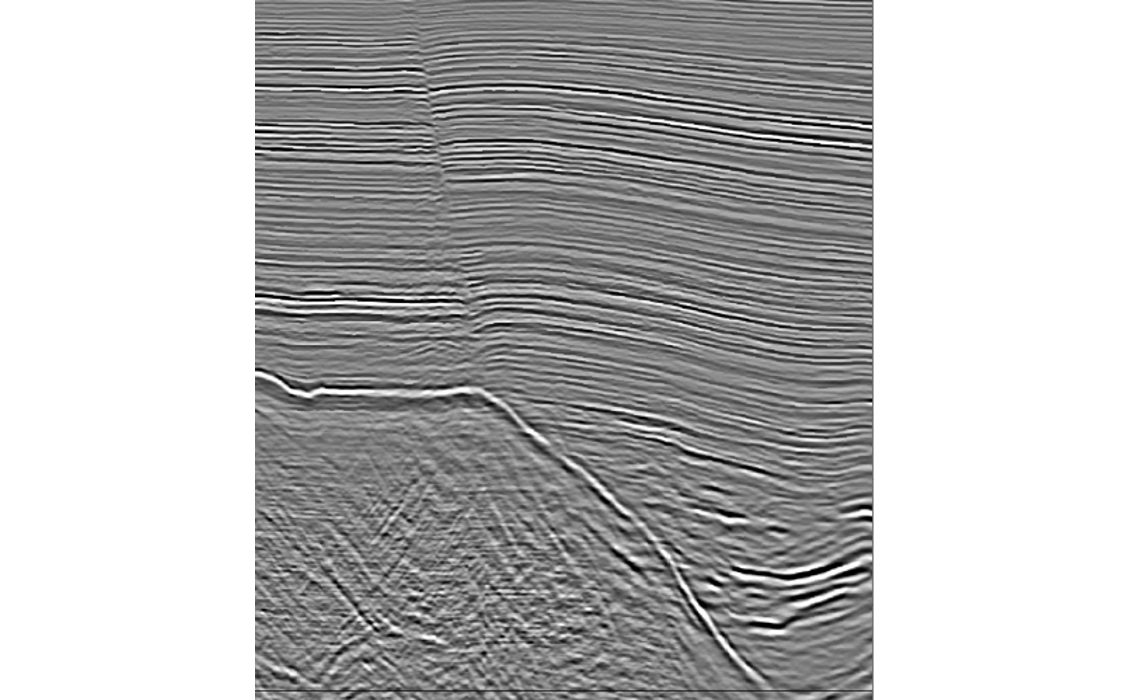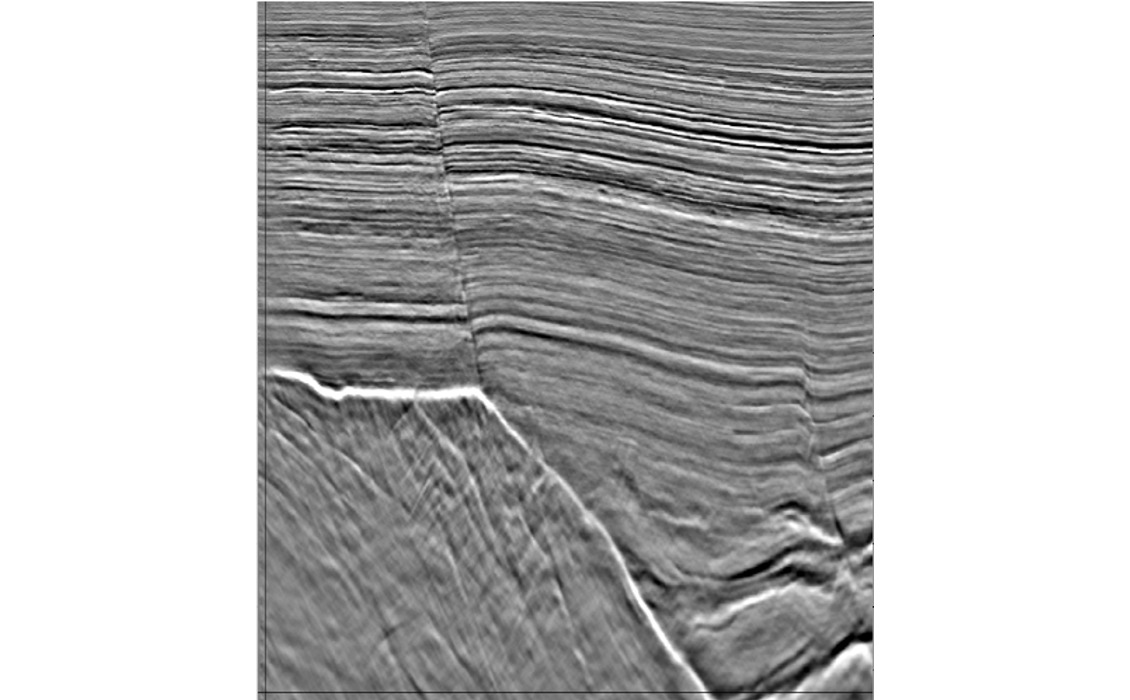The advantages of broadband seismic have been demonstrated around the world at all stages in the exploration and production cycle, for many different geologies, and in various different environments. High frequencies produce sharp wavelets, while low frequencies reduce sidelobes, so that with broadband, seismic events are single peaks or troughs corresponding to genuine geological layers. This clarifies impedance contrasts and creates sharp images of small features as well as clear differentiation between different sedimentary packages.
The high frequencies enable detailed velocity modeling which can provide better deeper images. However, in many respects the low frequency end of the spectrum is more important than the high, as the low frequencies provide more quantitative and reliable reservoir inversion results, simplified interpretation and clearer facies discrimination. The low frequencies in BroadSeis are also crucial for Full Waveform Inversion (FWI), which is gaining popularity for velocity model building.
Benefits For Exploration
As broadband data provide both low and high frequencies they are ideal for exploration as potential targets at all levels can be imaged. The characteristic broadband ‘texture’ highlights stratigraphy as the additional low frequencies give an envelope to the seismic signal that shapes the larger-scale impedance variations, or in geological terms, the major lithology variations. This increases confidence in correlating seismic interpretation across faults and other major structural features, allowing layers to be easily distinguished.
The Santos Basin data below demonstrate these advantages by providing clear differentiation of sedimentary packages and high-resolution shallow images, as well as clear imaging of the base of salt and the pre-salt sequences.
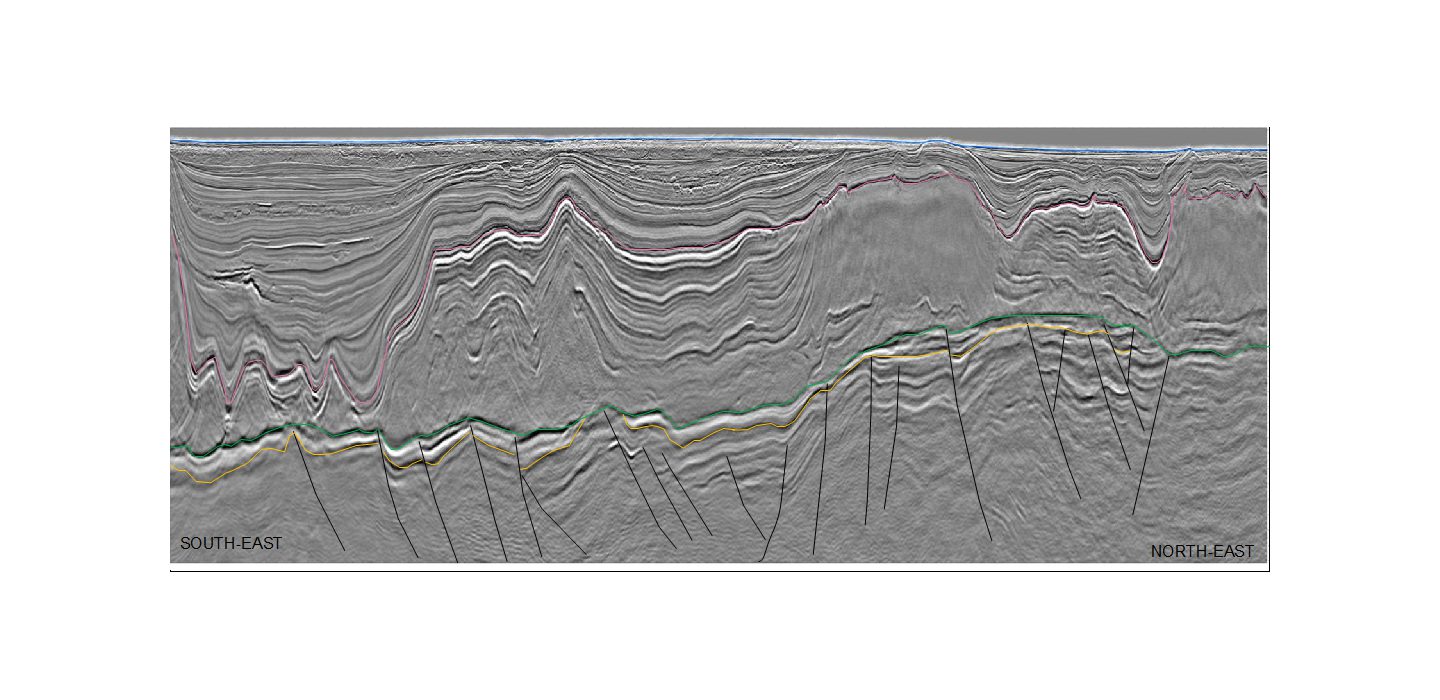 Brazil Santos Basin. These data from CGG’s Santos Basin, Brazil, BroadSeis Data Library show clear imaging of the base salt and pre-salt sequence.Three octaves of signal are generally considered necessary for adequate seismic resolution. Therefore, in order to achieve sufficient bandwidth in areas where high frequencies are limited, such as below salt where frequencies over 20Hz tend not to penetrate, it is necessary to extend the low frequencies, which are affected less by attenuation and provide greater accuracy and stability for seismic inversion.
Brazil Santos Basin. These data from CGG’s Santos Basin, Brazil, BroadSeis Data Library show clear imaging of the base salt and pre-salt sequence.Three octaves of signal are generally considered necessary for adequate seismic resolution. Therefore, in order to achieve sufficient bandwidth in areas where high frequencies are limited, such as below salt where frequencies over 20Hz tend not to penetrate, it is necessary to extend the low frequencies, which are affected less by attenuation and provide greater accuracy and stability for seismic inversion.
Conventional marine streamer acquisition usually lacks sufficient signal-to-noise ratio in the 2–7 Hz bandwidth due to streamer depth, streamer tow noise, source array configuration, source depth and source bubble. Using BroadSeis, it is possible to routinely record frequencies with good signal-to-noise ratio down to 2.5–3 Hz, providing three octaves below 20Hz as shown in the figure below.
The uses of broadband seismic in exploration are not limited to deep waters. CGG has acquired BroadSeis data in shallow water in the North Sea, offshore Vietnam and China, in water depths as shallow as 37.5m. In these areas the streamer shape is adapted to fit the circumstances, raising the deeper part of the streamer as the water gets shallower. The illustration below shows data recorded offshore China in water depths varying from 85 to 115m, which provide excellent results, both in the shallow detail and in the fractured basement.
Ghost-Free Data
As discussed in GEO ExPro, Vol. 11, No.1, BroadSource is a synchronized source with two gun arrays deployed at different depths. The downgoing wavefields from these gun arrays will be synchronized while their respective ghosts are de-synchronized. The advantage of obtaining de-synchronized ghosts with well-tuned time delays lies in the resulting notch-free amplitude spectrum of the source (Siliqi, 2013).
A synchronized multi-level source is a compact solution for acquiring broadband data with variable-depth steamers. It can be deployed in the flip-flop mode necessary for 3D broadband surveys and has all the benefits of a standard marine source in terms of robustness, directivity and repeatability. In order to maintain the same directivity created by conventional source arrays, a 3D spatial distribution of airguns in two vertical levels is used and the resulting directivity pattern remains at the same quality range as that for a conventional source, even for frequencies corresponding to the single-layer source notch.
The multi-level source allows defocusing of the ghosts, but does not eliminate them. Nevertheless, the absence of notches in the spectra allows designature of the seismic along the full bandwidth. While the accuracy of pressure field modeling is sufficient for source array design it is not precise enough for building source designature operators. These can be more accurately designed using recorded near-field hydrophone measurements (Ziolkowski 1982, Poole 2013). This acquisitionbased approach delivers a more accurate estimation of the bubble effect and low frequencies in general, which are fundamental for broadband acquisition.
 Amplitude spectra gain of a synchronized two-level source array with airguns at 6m and 9m, showing how the source ghost notch becomes filled in.This allows an accurate designature process which encompasses residual deghosting, debubbling and zero-phasing in the same step. Several acquisitions worldwide have demonstrated the benefits of this technique in delivering ghost-free images with an extra-wide bandwidth from 2.5 Hz up to 200 Hz.
Amplitude spectra gain of a synchronized two-level source array with airguns at 6m and 9m, showing how the source ghost notch becomes filled in.This allows an accurate designature process which encompasses residual deghosting, debubbling and zero-phasing in the same step. Several acquisitions worldwide have demonstrated the benefits of this technique in delivering ghost-free images with an extra-wide bandwidth from 2.5 Hz up to 200 Hz.
 NW Australia BroadSeis + BroadSource. Combining BroadSeis with BroadSource we achieve 6 octaves of ghost-free signal, from 2Hz to Nyquist for precise imaging of shallow data.Combining BroadSeis and BroadSource Combining BroadSeis variable-depth streamer acquisition with the BroadSource synchronized multi-level broadband source means that the receiver-side ghost diversity philosophy has been extended by introducing ghost diversity on the source side as well. With this, ghost-free broadband data with more than six octaves of signal is achieved, from 2. 5 Hz to 200 Hz, vital for the precise imaging of shallow data.
NW Australia BroadSeis + BroadSource. Combining BroadSeis with BroadSource we achieve 6 octaves of ghost-free signal, from 2Hz to Nyquist for precise imaging of shallow data.Combining BroadSeis and BroadSource Combining BroadSeis variable-depth streamer acquisition with the BroadSource synchronized multi-level broadband source means that the receiver-side ghost diversity philosophy has been extended by introducing ghost diversity on the source side as well. With this, ghost-free broadband data with more than six octaves of signal is achieved, from 2. 5 Hz to 200 Hz, vital for the precise imaging of shallow data.
BroadSource provides the same low frequencies as a deep-towed conventional source, but fills the source ghost notch to extend the spectrum in the high frequencies. For the deeper parts of the section, the highest frequencies will vanish due to the inelastic attenuation of the earth and will not contribute to the image. However, the full bandwidth present in the shallow section enables precise imaging for shallow-hazard mapping and accurate velocity picking.
Over the last three years BroadSeis technology has established a strong position in the marine broadband market with over 25,000 km of 2D and 160,000 km2 of 3D, wide- and full-azimuth data having been acquired. Part of its appeal is the routine acquisition of bandwidth of more than six octaves with excellent signal-to-noise ratio at low frequencies.
 BroadSource provides incredibly high-resolution imaging in the shallow section (2.5 to 200 Hz), making the data highly suitable for use in site surveys, as shown in this Norwegian data where the sedimentary infill in old fjords is visible. (Data courtesy of Lundin).
BroadSource provides incredibly high-resolution imaging in the shallow section (2.5 to 200 Hz), making the data highly suitable for use in site surveys, as shown in this Norwegian data where the sedimentary infill in old fjords is visible. (Data courtesy of Lundin).


